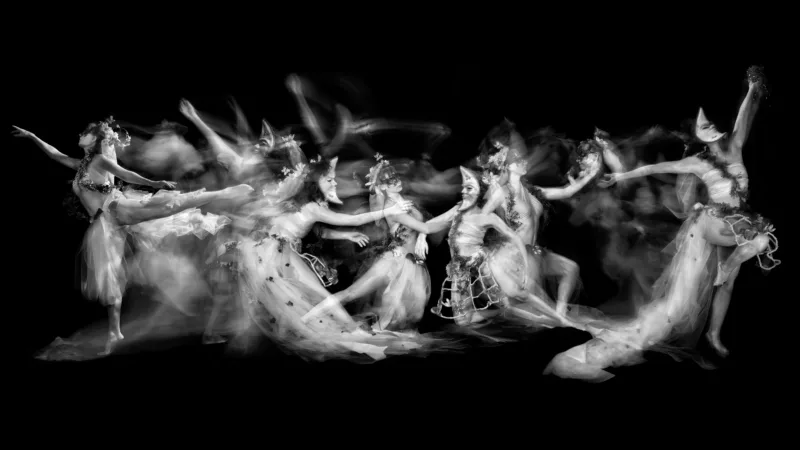
John Singletary is a photographer and multimedia artist whose work will be featured in the Philadelphia Volunteer Lawyers for the Arts (PVLA) fundraiser, The Arts Affair 2023 on June 7th. He’ll be exhibiting works on organic light emitting diode (OLED) panels, a high-resolution display technology, at the event.
Philadelphia, where Singletary is based, has had a significant impact on Singletary’s career, as well as helping to shape his progressive views on working toward equitable social justice reform and the positive role that art can play in communities. Singletary has found a thriving art community in Philadelphia. Working with collaborators from disciplines like costume design, makeup artists, choreographers, performers and composers has helped him expand his studio practice and create complex multimedia installations of extraordinary beauty and originality.
As a teenager, Singletary’s interest in photography as an expressive medium was piqued by seeing the work of musicians like Tim Rutili who created images for their album covers. Singletary began his formal study of photography at the Community College of Philadelphia and received his BFA in photography from The University of the Arts. An early goal was to master traditional photography techniques and have the freedom to operate at the high level of craftsmanship he admired in the work of photographers like Richard Kagan, Josef Koudelka, Helmut Newton, Guy Bourdin, Irving Penn, and others. Exploring the medium’s traditions and tools, closely studying how certain photographers handled light and contrast, Singletary has employed large format cameras, like those used by Ansel Adams, and formulated his own chemical solutions for darkroom use. For Singletary, the benefit of honing his craft gives him the freedom to explore, experiment, and find opportunities in unexpected results.
Much of photography is envisioning the invisible, guessing at outcomes, and nurturing the magic that happens in capturing images and revealing them in the darkroom. In one body of work, Synthesis, Singletary improvised with darkroom chemicals. He mixed them with dyes and other substances on illuminated glass plates and then captured the fractal geometries and other patterns that emerged.
Singletary has said that “prints give you a window into the world, and with an installation you get to create that world.” His multimedia installation project, Anahata, a Sanskrit word with multiple meanings including “unhurt” and “unbroken,” invites us into a world populated with beings that waver between the familiar and the fantastic. Dressed in gossamer and spikes, masks and body paint, the denizens of this dark world startle us with their luminescent power as they leap and cavort across a waking dream space. It is easy to suspend your disbelief with this immersive piece. When fully installed, the exhibition walls are black, and a 30-minute scored soundtrack of ethereal and eclectic world music plays on a loop. The images are synchronized across large format OLED screens. The light intensity of the images emerges and recedes, apparition-like, giving a sense of movement when there is none.
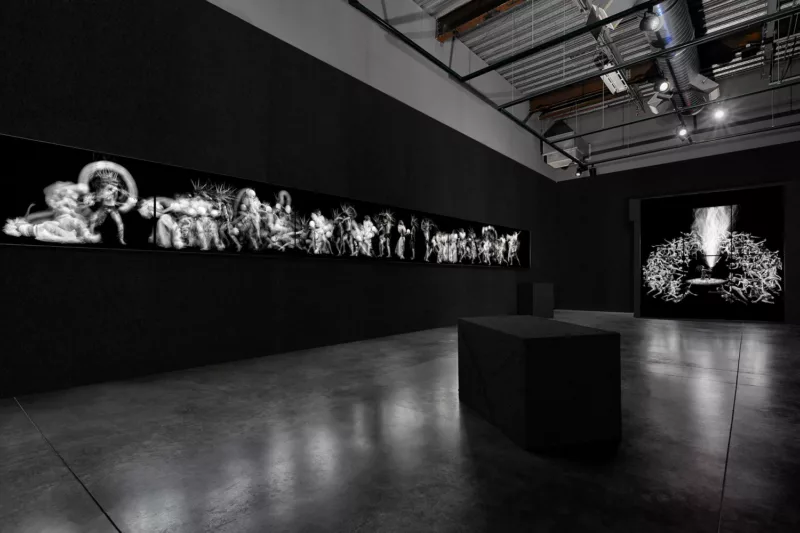
Singletary has described the OLED display technology as having a “gentle and smooth tonality that in many ways is reminiscent of a traditional platinum palladium prints or a carbon arc lamp projection.” Even when using cutting-edge technology, maintaining the integrity of the image within the tradition of photography remains a concern.
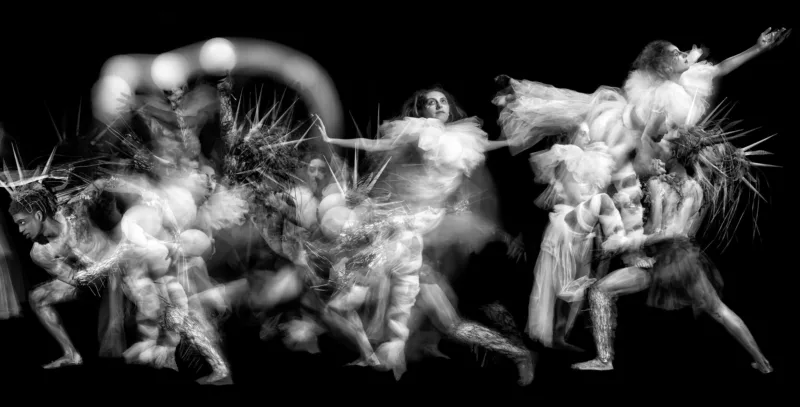
The piece developed from pencil sketches showing people interacting, mixed with mages of spiny seashells and other curiosities of nature, and drew inspiration from mysticism, mythology and folklore. A great deal of work was done in preproduction before assembling choreographers, dancers, performers, lighting and studio technicians for the shoot.
Production took place in a rented room of a Victorian house in Germantown. The crew transformed the space into a black box theater by lining the walls and windows with black fabric. Performers were costumed and covered in ultraviolet-reactive bioluminescent-looking body paint which would allow them to glow when captured on film and digital media. For this project, Singletary pivoted from his usual place behind a camera and assumed the role of a director. He invited ideas and encouraged collaboration from the crew and performers while maintaining the overall vision of the piece. He learned when to assert himself in the service of an idea and when to get out of the way and let the collaborative magic happen. Singletary worked with the crew to orchestrate the UV floodlights and strobe lights that transformed the dancers into moving light sources. The team shaped the images using intense bursts of light from the strobes alternating with leaving the camera shutter open to create the trailing afterimages. The results are static images that seem to move.
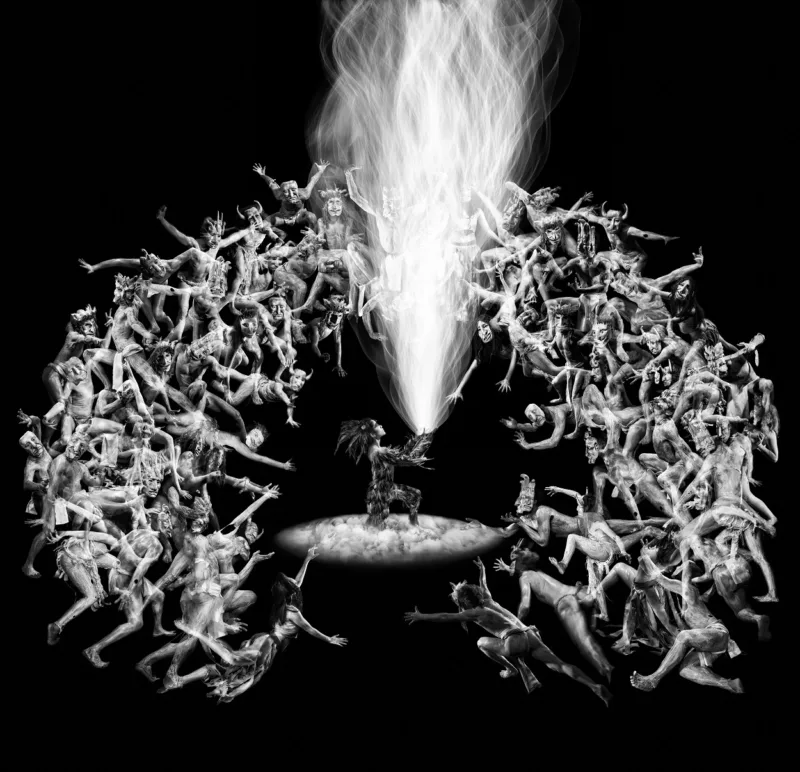
In Traces, a recent work, the images do move. Singletary combines video, stop-motion animation and historical footage in six 22-minutes works that stream on six OLED panels. A single audio track accompanies the installation. Music intermingles with extracts from interviews with a range of unidentified people. Singletary is once again looking at light and dark, this time from a conceptual as well as visual perspective. He is exploring universality and individuality, and how we construct the stories we call our lives, and what that means within our cultures and communities.
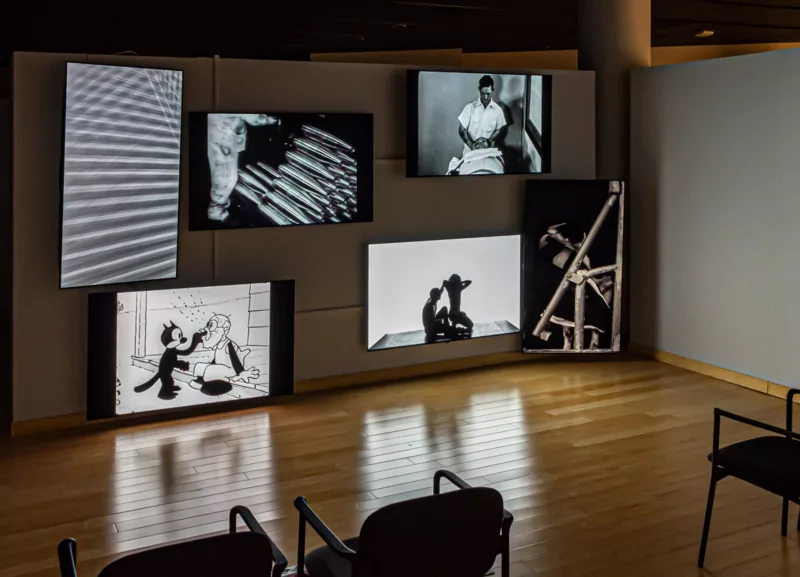
Singletary’s work has been collected by the Philadelphia Museum of Art, The Center for Fine Art Photography as well as other institutional and private collections. He has exhibited at the Pennsylvania State Museum, LG Tripp Gallery, The James Oliver Gallery, The Sol Mednick Gallery and The Delaware Contemporary Museum. His work has been reviewed and/or featured in Lenscratch Magazine, L’Oeil de la Photographie, the Od Review, Movers and Makers (WHYY) and the Philadelphia Inquirer. Singletary is also a contributing writer for The Photo Review Journal. His upcoming monograph, Traces, published by Daylight Books will be available in the Spring/Summer of 2024.









